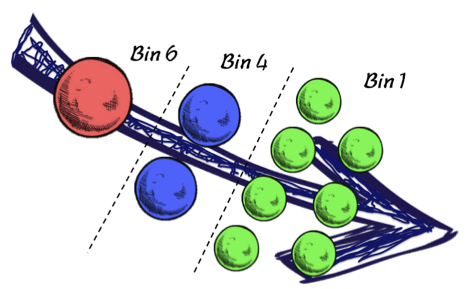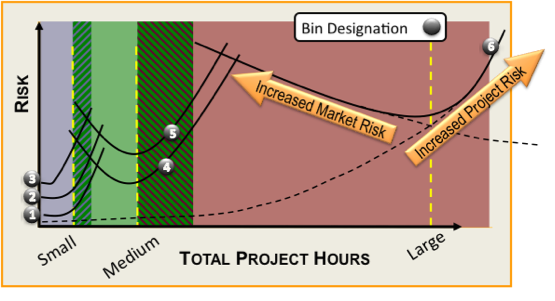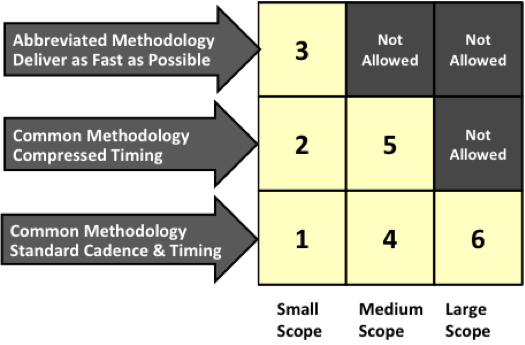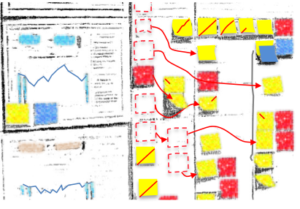Establish Portfolio Cadence & Flow
The planning of the product portfolio, the flow of execution of the delivery as well as the cadence of development are all critical in creating the appropriate throughput of new products necessary to deliver the business objectives.


Establish Portfolio Cadence and Flow
Portfolio planning establishes the number and sequence for the type of projects (bin size) as well as the connection of those projects to the business and market needs. The active projects in the portfolio are the ‘Work-in-Progress’ (WIP). Creating project bins enables standardized work in terms of scope, schedule, and resources optimizing the project portfolio over individual projects. Since every project carries inherent market and project risks, standardizing projects at the optimal for the project type reduces risk, and improves efficiency while also simplifying the planning process.
Cadence can be thought of as the ‘metronome’ that paces work conducted by the organization. Cadence is the standard against which to evaluate all work progress and establishes integration event timing, and in turn, the length of learning cycles.
Flow considers how work progresses through the system. It assesses the linkages and handoffs associated with work as well as the uniformity of the movement or progression of work through the system.
A corollary to cadence and flow in manufacturing terms is ‘Takt time’ and the physical movement of goods through a factory. In a well functioning manufacturing environment, Takt time aligns the work with customer demand and the equipment or assembly lines dictate the flow and movement of material. In project, technical, or engineering work it often feels that demand is 'unlimited' and in some companies it is treated as such. The effect of operating a development system where the product portfolio, the development cadence, and the project flow are not in concert with the needs of the business is that it creates tremendous inefficiencies as the system operates in a constant mode of firefighting, non-synchronous efforts, and inconsistent progression of work. Although it may not be overtly recognized, this becomes the ‘defacto’ method of operation. Lean development methods unravel the Gordian knot of traditional methods and enable work to be visible so the organization can take appropriate actions.

Questions to Consider
-
What type of projects does the organization deliver?
-
Which have been more / less successful?
-
How is product portfolio planning done?
-
What is the portfolio plan?
-
What is the organization’s product delivery cadence?
-
What are the scope, schedule, and resources assigned to projects?
-
What is the time interval for key milestones?
-
How consistent is the project delivery


